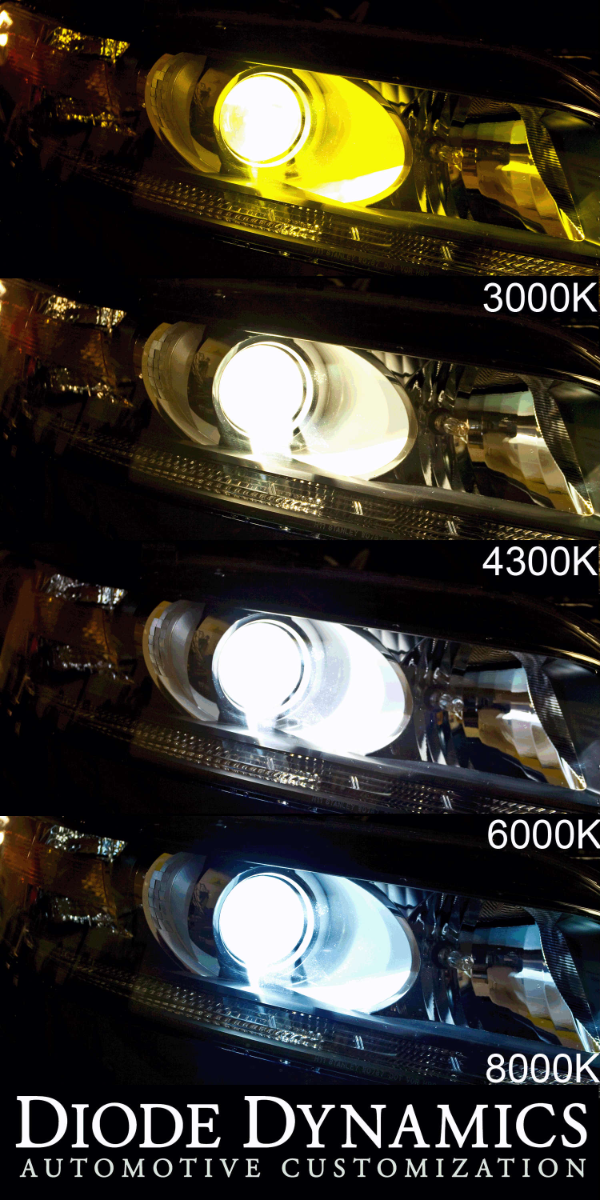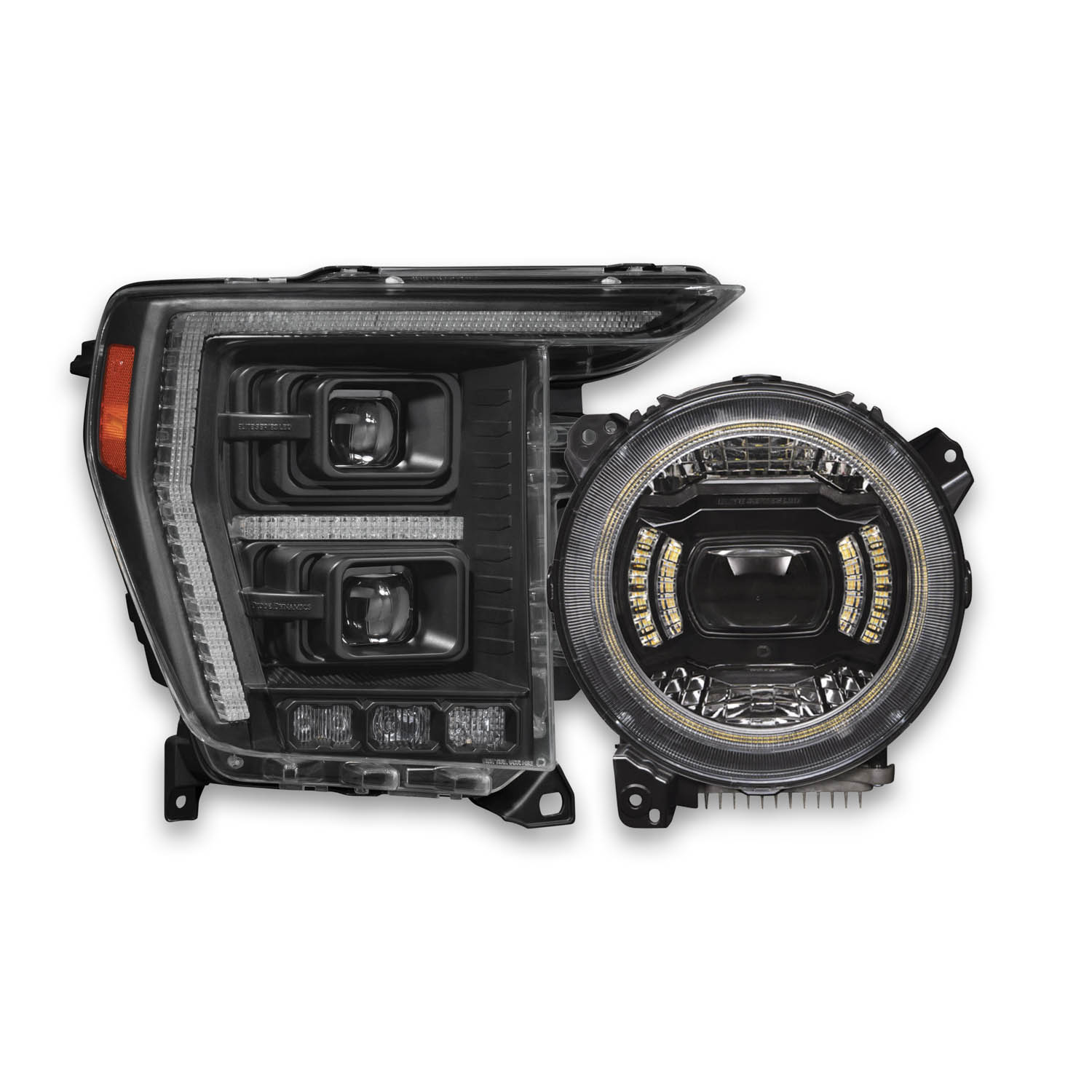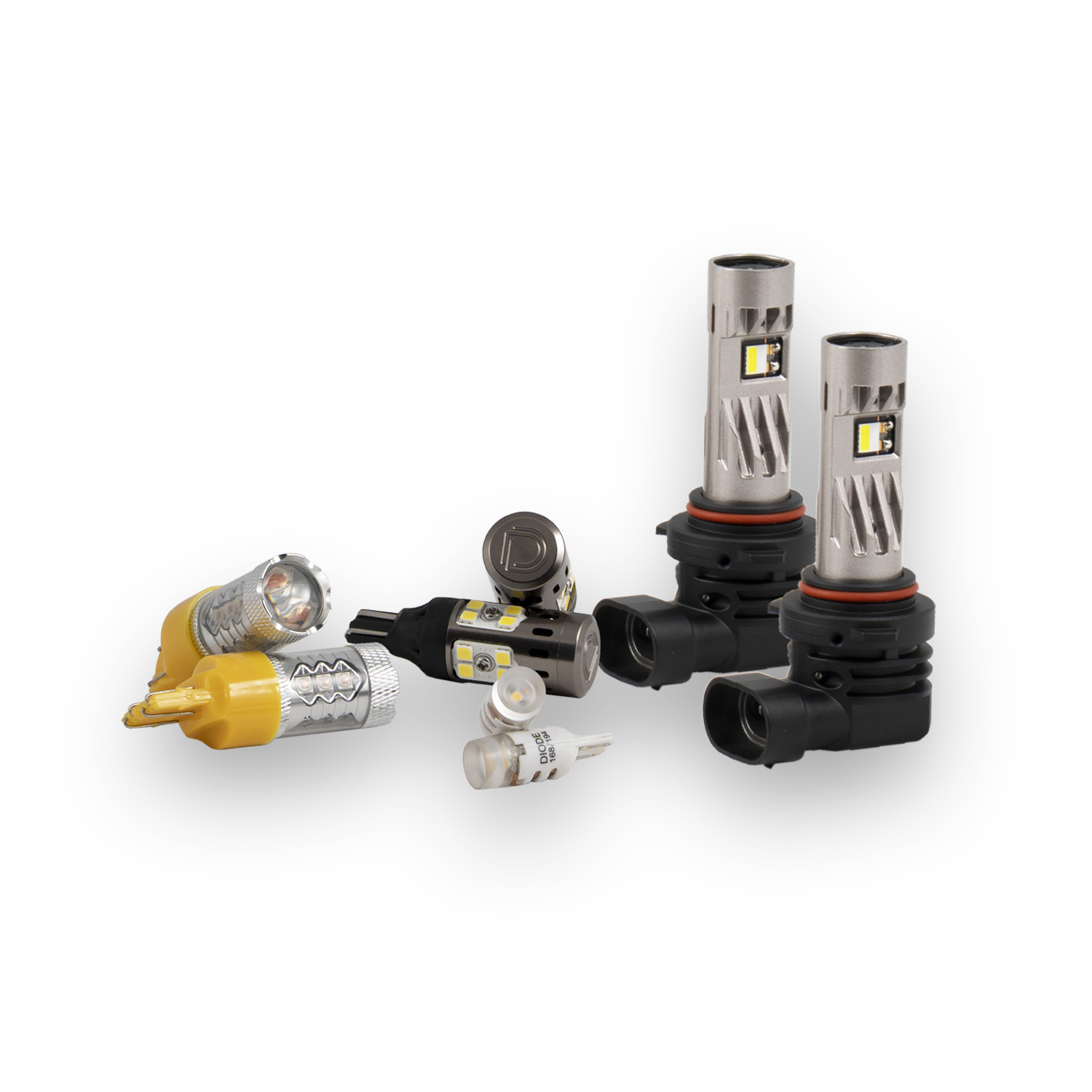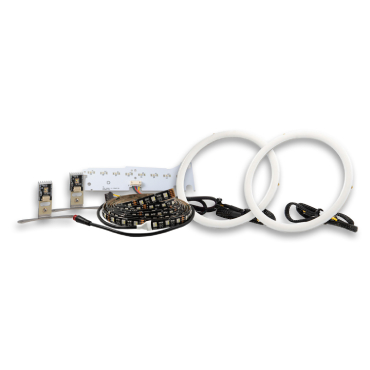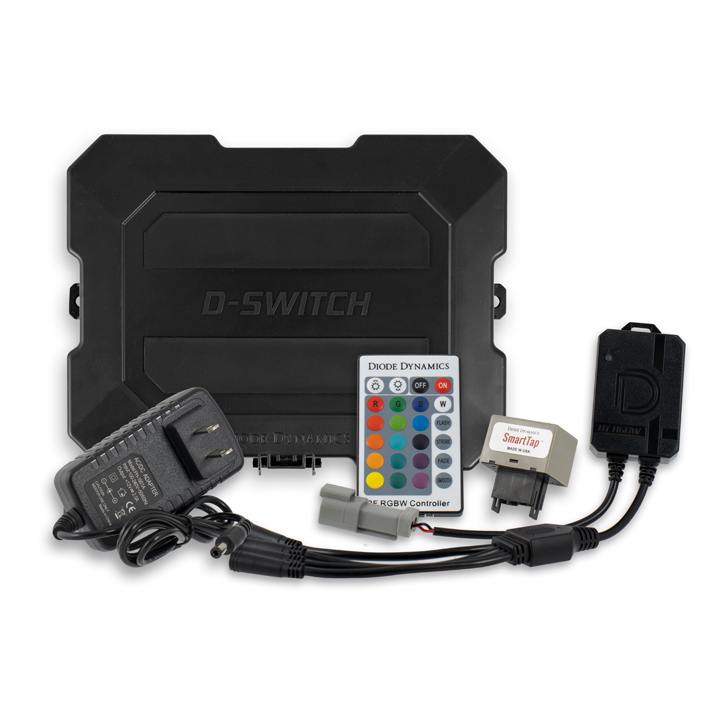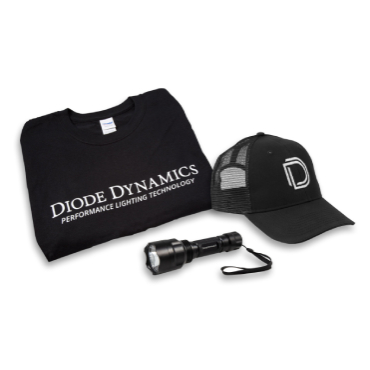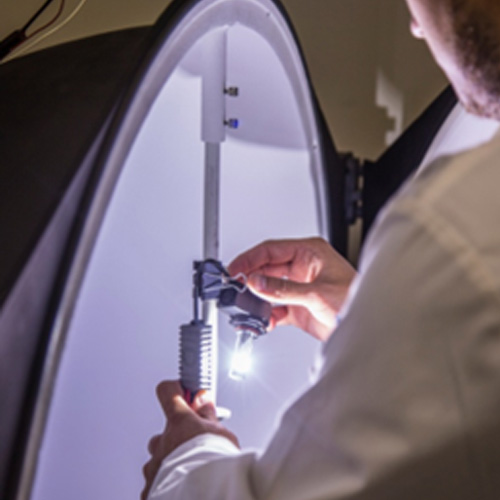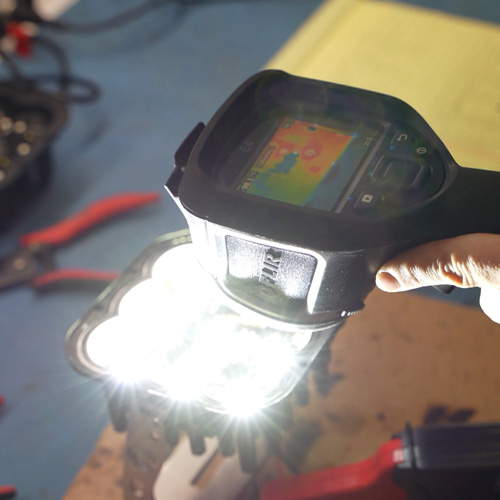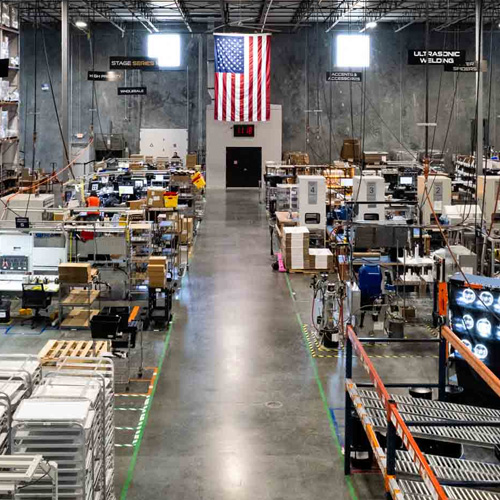HID Lighting Technology
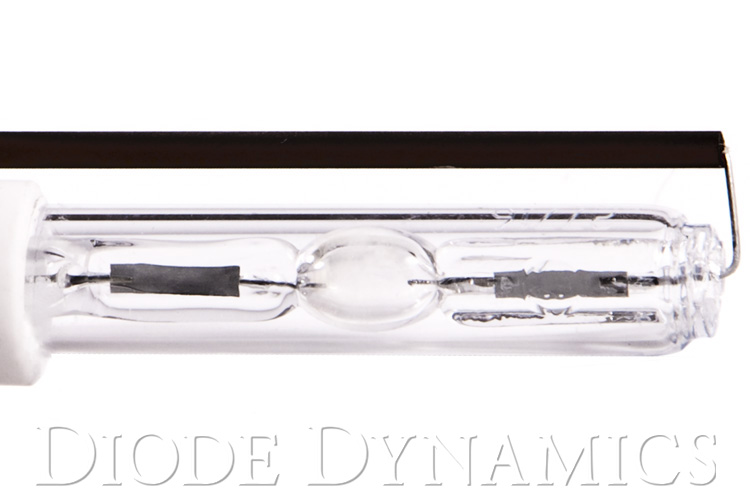
High-intensity discharge (HID) headlamps produce light with an electric arc rather than a glowing filament as you might find in a standard halogen bulb. The light itself comes from an arc of electricity, facilitated by metallic salts that are vaporized within the arc chamber. To start the bulb, an ignitor provides a high-voltage pulse to the bulb, which creates a spark, ionizing xenon gas in the bulb, creating a conducting tunnel between the tungsten electrodes at the top and bottom of the glass tube. Electrical resistance is reduced within the tube, and the current flows between electrodes. As the bulb warms up, the salts continue to vaporize, further lowering resistance between the electrodes. The electronic ballast, which controls the power supply, senses the drop in resistance and adjusts to provide a continuous current to the bulb. After the bulb is fully "warmed up," the arc has attained stability, and the luminous efficacy has attained its nominal working value. The ballast then continues to supply stable electrical power to the bulb, to provide steady, bright light.
Halogen bulbs usually burn out after about 400 hours, while HID bulbs can last for 2500 hours or more. The first HID bulbs operated on a direct current (DC), but in DC, one electrode is constantly being hit with high speed ions, since the power flows in only one direction. Over time, this erodes the electrode, resulting in short bulb life. You might see some HID conversion kits available in DC configuration, but they are unreliable compared to the far-superior alternating current (AC) HID systems. All OEM HIDs use AC, and Diode Dynamics only provides AC components. In AC, the heat is shared between two electrodes, significantly increasing the life of the bulb and overall performance.
HID Bulbs
Size/Fitment. HID bulbs are rebased to halogen-size bulb mounts, for retrofit application in halogen headlight assemblies. In purchasing HIDs, it is crucial to select the required size for your application. Diode Dynamics maintains vehicle-specific listings to assist in this process. If the bulb does not fit properly in the housing, the light output will be compromised. This goes for any application, whether you're upgrading your factory halogen headlights with the HID Conversion Kit, or replacing your OEM HIDs. The distance of the arc-capsule in the bulb relative to the bulb base is extremely important. If the bulb is not fully seated in the back of your projector, the reflectivity of the headlight will be off, and the output will suffer.
Alignment. In addition to the fitment of the base of the bulb, it is also extremely important for the glass tube of the bulb, which contains the light source, to be aligned correctly, fully straight on the base. If the capsule is even slightly tilted, the output will be affected. It is important to make sure you purchase a bulb that is supported at the base by either a ceramic piece or metal frame, not simply a plastic piece, which can warp due to heat over time and create a misalignment. Diode Dynamics HID Bulbs are individually laser-aligned as part of the manufacturing quality control process, and use a ceramic base to ensure perfect alignment. By purchasing a set of bulbs constructed at the highest quality, you will achieve better alignment, which allows for a tighter beam pattern, reducing hotspots and producing a cleaner output.
Color. Color in lighting is described in Kelvin, or the temperature of the light. You may have seen a "3500K" rating on interior lights for your house. In HID bulbs, the halide salts determine the color of light. The bulb color or temperature is achieved by the blend of salts within the capsule, which consists mainly of scandium iodide and sodium iodide. With higher-temperature bulbs, more indium iodide is used to achieve the color. Around 23kV of power is required to start the arc across the bulb. At first, a slight blue color can be seen, which is formed from the low-temperature emission around the two electrodes. The temperature of the arc chamber rises as the arc continues, and vaporizes the salts in the capsule. The vaporized salts are ionized into a plasma, which emits the light and lowers the voltage. When checking a bulb for quality, you should note a generous portion of salts resting in the capsule- little or no visible salts is an indication of poor quality, as the salts are one of the more expensive parts of a bulb, and cheaper manufacturers will cut costs here.
As HID bulbs age, the Kelvin color temperature rises, or becomes "cooler," causing the output color to be more of a bluish-white. This is called color-shifting. If you see a car with five-year-old 4300K HID bulbs, they would probably look like they were running 6000K bulbs. This is because over time, the electrodes deform, and the blue glowing of the plasma region around the larger surface area of these deformed electrodes contributes a cooler color to the total output.
For more information on HID Brightness and output, click here.
UV Output. The arc of light from an HID bulb can give off some harmful UV rays, so it is standard practice for a glass shell to be placed around the capsule to soften the UV output. This is why there are actually two glass tubes in each bulb.
Wattage. The power provided to an HID bulb will determine the total light output and will also affect the color output. As power increases, light output increases and the color becomes more "washed out," becoming more white. The two most common power levels of HID bulbs are 35-watt and 55-watt. In fact, the bulbs work in exactly the same way, but since higher power washes out color, the 55W 6000K will be designed with "cooler" salt composition than a 35W 6000K bulb, so that when you fire them up, they'll both appear 6000K, even though one is driven by 35W and one is driven by 55W. Most bulbs on the market are 35W, and OEM HID is always 35W, but 55W kits have been promoted as an up-sell by many companies, although they cost the same to produce. At Diode Dynamics, we only offer 35W bulbs and components, as 55W bulbs produce an excessive amount of heat, which can damage the headlight or foglight housing, and have a much shorter lifespan. Please be sure to read the section on ballasts in order to see more reasons 55W isn't really worth it!
Warranty: Although HID Bulbs last longer than halogen bulbs, they will eventually burn out. However, defects in electronics manufacturing do occur, so when purchasing your bulbs and ballasts, make sure that the manufacturer or distributor offers a good warranty and replacement policy in case something happens to the bulbs. At Diode Dynamics, we provide a full 3-year warranty on all HID bulbs and ballasts.
HID Ballast Technology
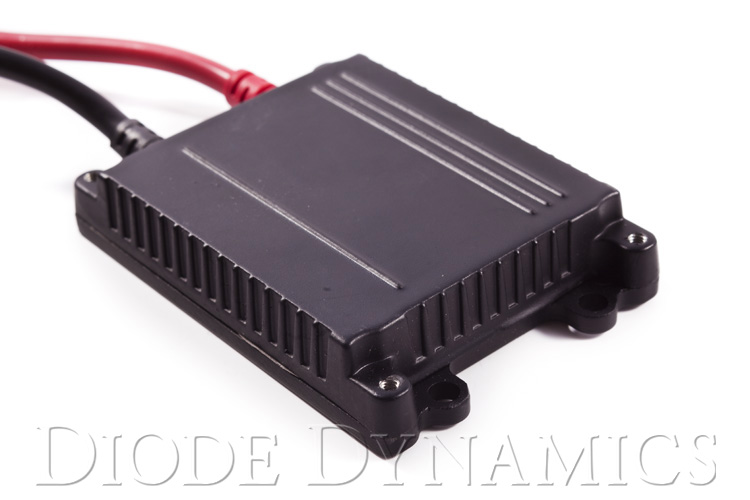
A ballast is a device that controls power output in a variable manner. They are found in most types of arc lighting, such as commercial fluorescent lights, and of course, in automotive HIDs. The ballast is composed of an electrical circuit that can be designed to fit into any shape of housing, which is usually aluminum. The circuitry is inside the housing, and it should be fully sealed in a process known as potting, to make the ballast completely waterproof. The quality of the ballast can be determined by the quality of electrical components on the circuit, the quality of circuit construction, and the amount of watertight sealant used inside the housing.
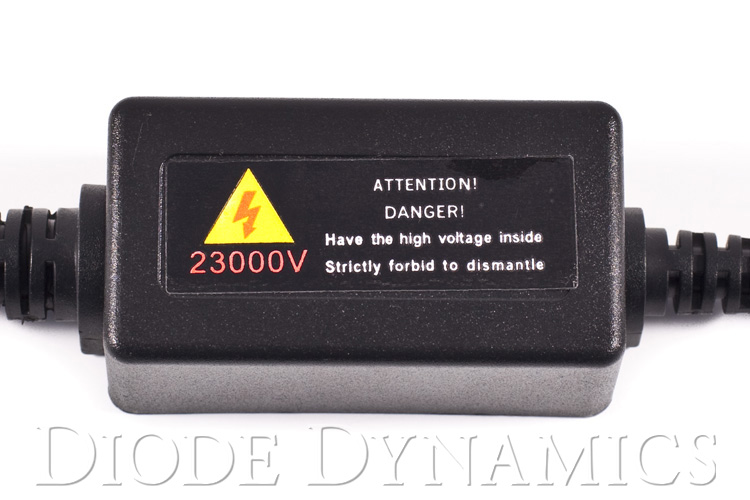
The main role of the ballast is to control the power supply. After igniting the bulb, the power is carefully controlled as the bulb "warms up" and resistance decreases. This is what determines how quickly the bulb warms up: too much power delivery will create premature failure, and too little power will mean a long warmup time. In a digital ballast, the controller chip continuously analyzes the changing resistance and varies the power output in order to warm the bulb up more quickly and safely. The best ballasts on the market use an application-specific integrated circuit (ASIC) for this, which is designed specifically for use in HID ballasts. Most generic aftermarket ballasts still work well with generic controller chips, but the best performance is only provided by an ASIC chip. ASIC chips can be found in all OEM ballasts, as well as Diode Dynamics premium aftermarket ballasts.
The main circuitry controls the power output to the bulb, but to get things started, the bulb requires a large pulse of power, usually at least 23kV, which is provided by a component called an ignitor. Older non-digital aftermarket ballasts have the igniter integrated into the ballast housing, along with the ballast circuitry. In newer slim ballasts, the ignitor is moved outside of the main housing to save space.
Typically ballasts have anywhere from a 0.1% to 20% failure rate and vary immensely in quality. HYLUX is a common manufacturer for both aftermarket and OEM ballasts. The HYLUX ballasts have less than a 0.2% failure rate.
For more information on ballasts, visit our page here.
HID Color Temperature
Kelvin Reference Guide
3000K: is our lowest temperature, and has a pure yellow output, which is great for use in fog lights or for a unique look.
4300K: is a pure white output, and is used in all factory HIDs. It will not have any blue tint, just a natural white color.
6000K: is our most popular color, which produces an ice white color. It has a slight hint of blue and matches best with our LED bulbs.
8000K: is our highest temperature, which produces an ice blue color.
